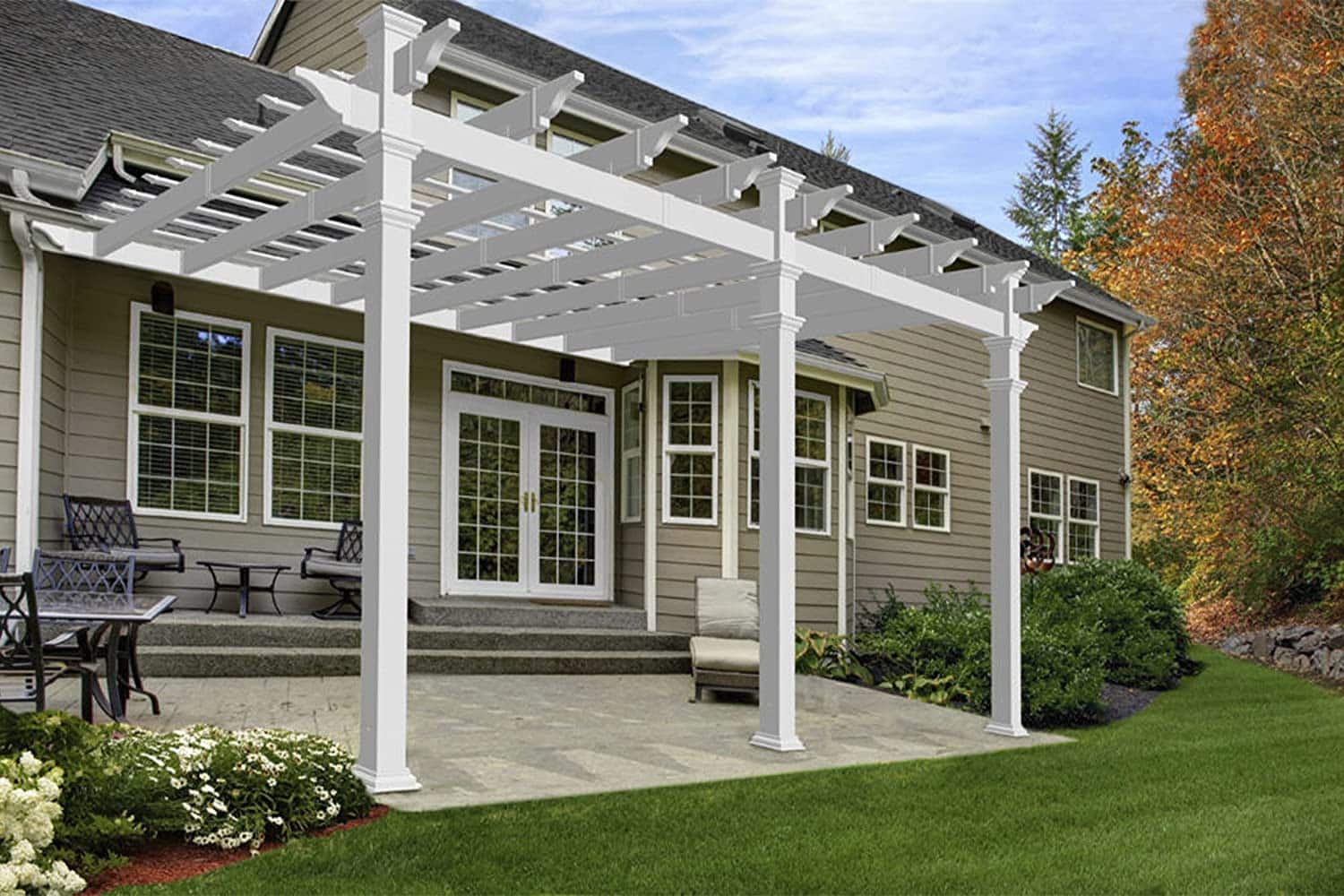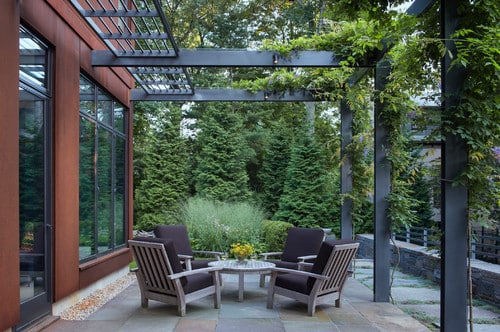The pergola is a small outdoor extension of the house. It looks a bit like the veranda, but is much more practical. It increases the value of the property since it makes it possible to have additional square meters assigned to different purposes: garden furniture, outdoor dining room, workshop, library, pool house… It’s up to you to see what it will be used for. For it to fulfill its role perfectly, there are a few criteria to define before building it.
What type of pergola do you want to install?
There are different types of pergolas that adapt according to the architecture of the houses and the surface of the gardens or terraces.
The attached pergola

When you live in an area where the wind tends to be capricious, the attached pergola is the best option. As its name suggests, it leans against a wall of the house, normally the one facing the garden, and is thus partially sheltered from drafts. There are many models of attached pergolas . Its proximity to the house makes it practical since it becomes an extension of the dining room or the living room.
It is possible to order a custom-made model , according to your desires and the available space. You can also buy a model as a kit if no major constraints arise. Another significant advantage of the pergola attached to the house is that it keeps the house cool during periods of high heat and protects against UV rays.
The freestanding pergola
In contrast to the pergola attached to the house, there is the freestanding model. Unlike its cousin, it does not need a wall to be erected. So you can install it anywhere in the garden. It is possible to opt for a fixed pergola or a removable model. This model is more interesting if you later plan to install another structure in the chosen location. In both cases (fixed or removable), you must provide a perfectly flat floor, with a concrete screed, to accommodate it. These works slightly increase the bill compared to the back-to-back model.
In most cases, fixed freestanding pergolas are made of aluminum, wood or wrought iron. The removable versions are usually equipped with a fabric roof for easy dismantling.
The bioclimatic pergola
This model has been popular for several years. It can be freestanding or attached to the house. What makes it so special? Above the roof structure, it is equipped with 160° adjustable aluminum blades . Depending on the weather, you can order them for:
- let the sun shine through,
- give you some shade,
- protect you and the furniture from rain or snow,
- shelter you from the wind.
Depending on their orientation, the slats can be open or closed. Rest assured, they are airtight to give you a waterproof roof under which to shelter from the elements.
The orientation of the blades can be done via a switch or a remote control. There are also self-closing blades . These blades are equipped with rain, wind and frost sensors.
Which material to choose for your pergola?
Different materials can be used to build a pergola.
The wrought iron pergola
The main advantage of the wrought iron pergola is a long lifespan of up to 15 years . This material is robust and brings a somewhat vintage style to the structure. To keep it looking good, rust proofing should be applied every 2 years. Given the weight of wrought iron, it is to be adopted only when the ground is robust.
The aluminum pergola
Its lifespan is even better since it is unlimited . This material is also the one with the best thermal performance. Despite its finesse, it does not require much maintenance and brings a touch of modernity to the garden. Its only downside: its high cost compared to other materials.
The wooden pergola
Like wrought iron, the life of wood can reach 15 years , or even a little more if it is well maintained. It must, in fact, be treated every year against wood-eating insects and every 3 years against humidity. It is a very popular material, because in addition to bringing a natural touch to the garden, its cost remains within reach of all budgets.
The PVC pergola
Its affordable price is attracting more and more people. It is also a material that does not require major maintenance and brings a touch of modernity to the garden. Its only downside is its limited lifespan. This is around 5 years old .
What type of roof for your pergola?
This is also a criterion to consider. Among all the existing models, we already know the adjustable bioclimatic blades. Apart from them, here are the other options available to you:
- the roll-up and retractable canvas,
- the fixed glass or polycarbonate roof, for example,
- the wooden slat roof,
- the bamboo roof,
- the textile roof.
Depending on the roof chosen, you can also grow a climbing plant there to personalize it and give it a more natural look.
Each type of roof brings a unique charm to the pergola. While the green roof reinforces the natural side, the textile roof brings a bohemian touch. The wooden slats remain a great classic while the glass and polycarbonate bring a modern note.
Whatever your choice, just make sure you have a ceiling height of 2m20 . This allows you to have more space and to be able to install any type of furniture in the pergola. On the other hand, avoid roofs that are about 3 meters too high, as their protection against wind, rain and snow is limited. Regarding the floor space, you remain free to occupy as many square meters as necessary for your project.
Finally, since it is an extension of the house, note that a building permit may be necessary, especially for attached pergolas of more than 20 m².
